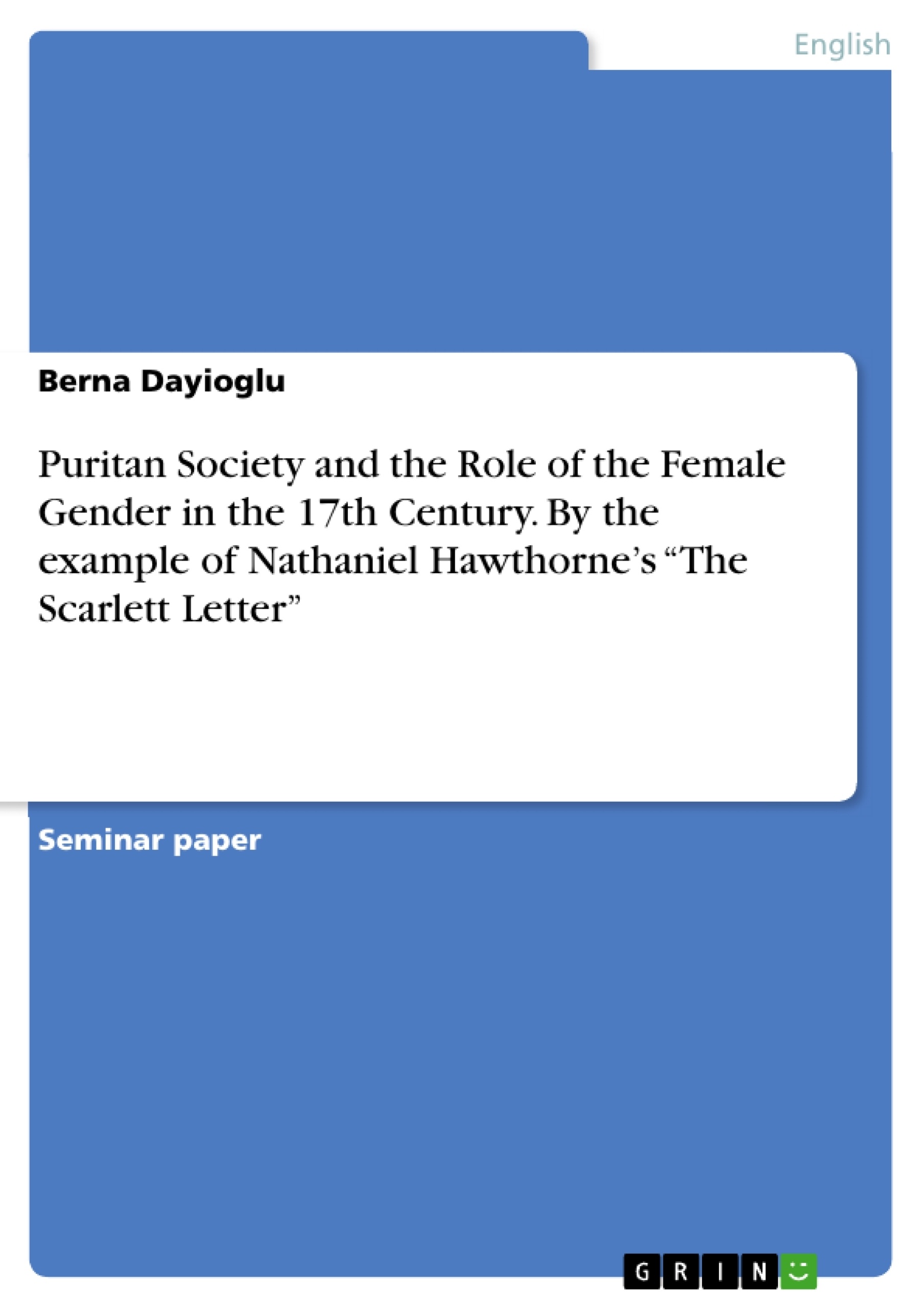This research paper deals on the historical and cultural background of the 17th Century and will be focused on the literary work “The Scarlet Letter”.
Today, topics like gender equality and feminism are so important and up-to-date that one cannot be uninformed. Everyone has an opinion and no one is afraid to speak openly about it anymore. They are free to say, write and think what they believe is right. They are able to vote and go to work. They can use any social media platform and tweet or post their views and experiences and get some attention.
This was not the case a few centuries back. Women were oppressed and not able to speak their minds. Women had to fight for their rights to be acknowledged, which has enabled us to be in the position that we are in now.
The Scarlet Letter by Nathaniel Hawthorne is a literary work that has academic value and is often classified as required reading in classes. It was published 1850 and tells the story of a woman in Puritan times who has to face the consequences of committing adultery. The novel represents the Puritan society and the way women were treated in that time. It gives attention on the ideology and gives many details in which today’s readers can imagine the struggle of obedience to the system.
Table of Contents
- Introduction
- The 17th Century
- Historical Background
- Cultural Background
- The Scarlet Letter by Nathaniel Hawthorne
- Punishment
- Themes
- The Female Gender
- Today's Women
- Conclusion
Objectives and Key Themes
This research paper explores the historical and cultural context of 17th century Puritan society, specifically examining the role of women through an analysis of Nathaniel Hawthorne's "The Scarlet Letter." It aims to highlight the limitations imposed on women during this period and to draw connections between the novel's depiction of female agency and the current discourse surrounding gender equality and feminism.
- The impact of Puritan ideology on women's roles and freedoms
- The portrayal of societal constraints and the consequences of transgressing societal norms
- The themes of sin, punishment, and redemption in relation to female characters
- The significance of "The Scarlet Letter" as a historical and literary representation of the female experience
Chapter Summaries
- Introduction: This chapter sets the stage for the research paper, discussing the historical and cultural context surrounding gender equality and women's rights, highlighting the importance of understanding the past to appreciate the present.
- The 17th Century: This chapter provides an overview of the historical and cultural backdrop of 17th century Puritan society. It explores the motivations behind European migration to North America, the establishment of colonies, and the development of the Puritan ideology, specifically examining its impact on gender roles and sexuality.
- The Scarlet Letter by Nathaniel Hawthorne: This chapter delves into the novel's portrayal of the Puritan society, focusing on the consequences of adultery and the treatment of women. It examines the novel's themes, including punishment, sin, and redemption, and explores how these themes are intertwined with the character's experiences and the societal expectations of their time.
Keywords
This research paper focuses on the 17th century Puritan society, particularly its influence on gender roles and the portrayal of women in literature. Key themes include Puritan ideology, societal constraints, female agency, sin, punishment, and redemption. "The Scarlet Letter" by Nathaniel Hawthorne serves as a primary source for this analysis, allowing for an exploration of the historical and literary significance of women's experiences in this specific context.
- Quote paper
- Berna Dayioglu (Author), 2019, Puritan Society and the Role of the Female Gender in the 17th Century. By the example of Nathaniel Hawthorne’s “The Scarlett Letter”, Munich, GRIN Verlag, https://www.hausarbeiten.de/document/1252969


